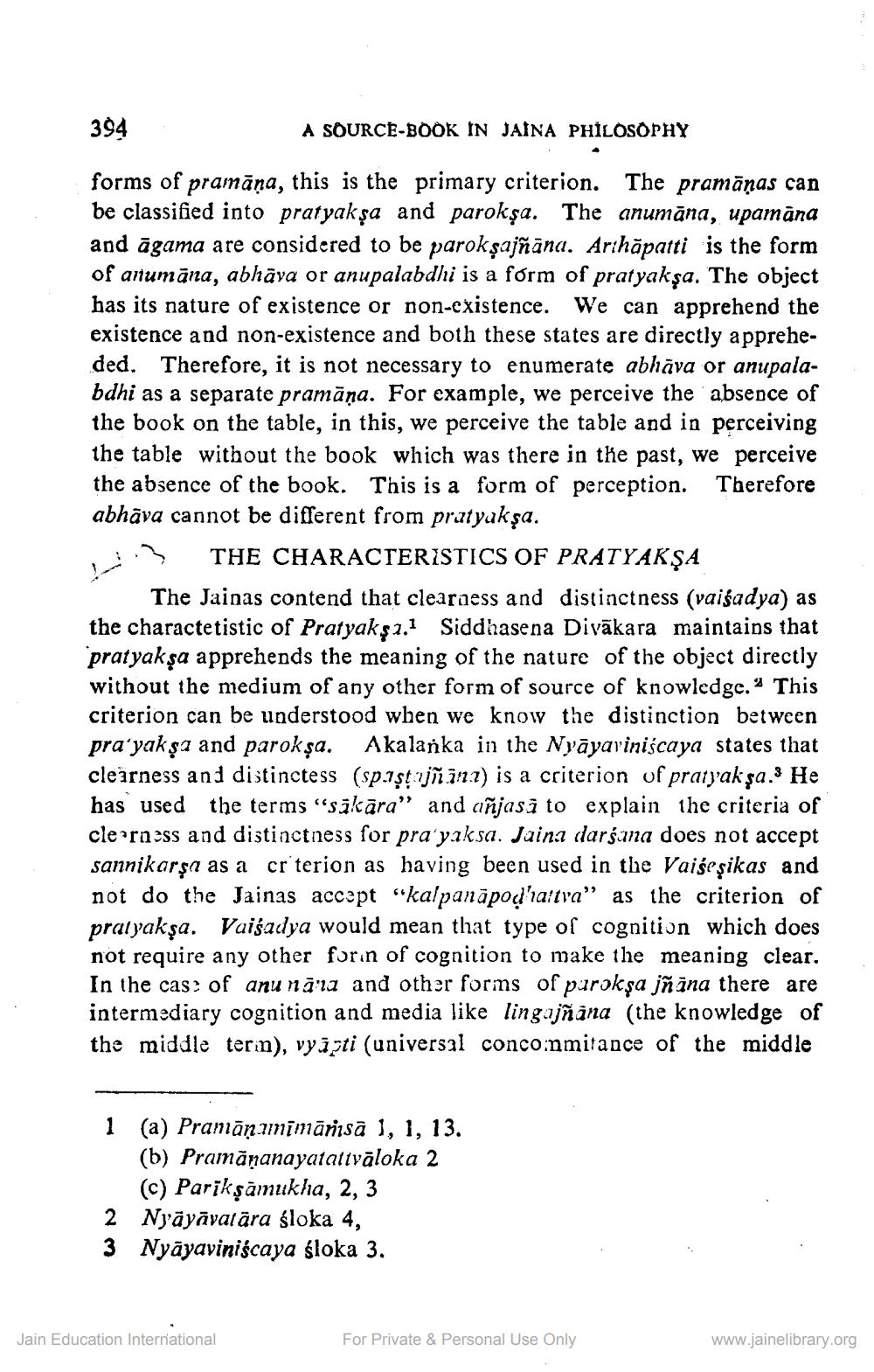________________
394
A SOURCE-BOOK IN JAINA PHILOSOPHY
forms of pramāņa, this is the primary criterion. The pramānas can be classified into pratyakșa and parokşa. The anumāna, upamāna and āgama are considered to be parokşajñāna. Arihāpatti is the form of anumāna, abhäva or anupalabdhi is a form of pratyakşa. The object has its nature of existence or non-existence. We can apprehend the existence and non-existence and both these states are directly appreheded. Therefore, it is not necessary to enumerate abhāva or anupalabdhi as a separate pramāna. For example, we perceive the absence of the book on the table, in this, we perceive the table and in perceiving the table without the book which was there in the past, we perceive the absence of the book. This is a form of perception. Therefore abhāva cannot be different from pratyakşa.
.? THE CHARACTERISTICS OF PRATYAKŞA
The Jainas contend that clearaess and distinctness (vaisadya) as the charactetistic of Pratyakşa.1 Siddhasena Divākara maintains that pratyakşa apprehends the meaning of the nature of the object directly without the medium of any other form of source of knowledge. % This criterion can be understood when we know the distinction between pra'yaksa and parokşa. Akalanka in the Nyāyariniscaya states that clearness and distinctess (sp.stuñanz) is a criterion of pratyak sa. He has used the terms "sīkāra" and añjasi to explain the criteria of clearness and distinctness for pra'yaksa. Jaina darśana does not accept sannikarsa as a crterion as having been used in the Vaišeşikas and not do the Jainas accept "kalpanāpod'a tra” as the criterion of pratyakşa. Vaisadya would mean that type of cognition which does not require any other forin of cognition to make the meaning clear. In the cas: of anu nāra and other forms of purokşa jñāna there are intermediary cognition and media like lingajñāna (the knowledge of the middle terin), vyāpti (universal concoinmitance of the middle
1 (a) Pramānımīmārisā 1, 1, 13.
(b) Pramānanayatattvāloka 2
(c) Parikṣāmukha, 2, 3 2 Nyāyāvatāra śloka 4, 3 Nyāyaviniscaya śloka 3.
Jain Education International
For Private & Personal Use Only
www.jainelibrary.org




